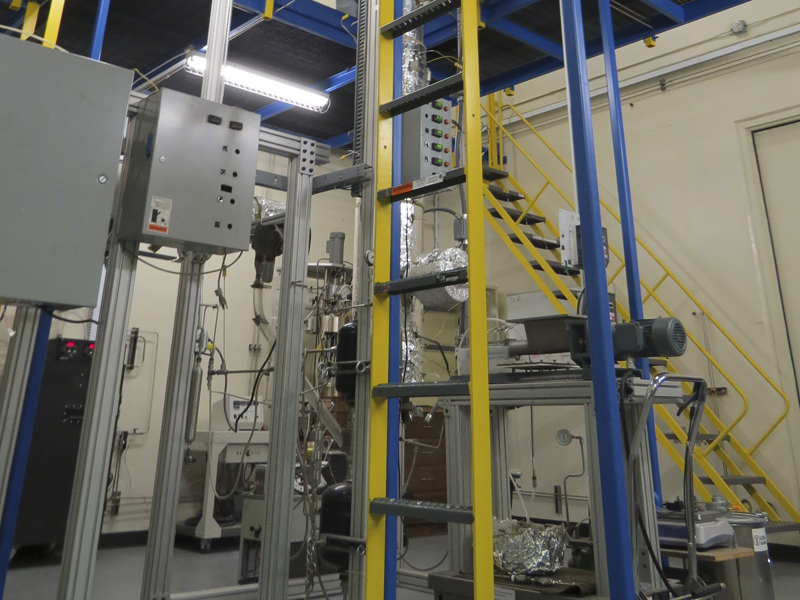
UCR engineers showcased an energy conversion system at the UC’s Center for Environmental Research and Technology (CE-CERT), which can turn agricultural or human waste into a form of clean energy. The system uses a process called “steam hydro-gasification,” which cleanly burns the waste in a pressurized reactor at nearly 1,400 degrees.
Through the , system, carbon-based materials, such as garden clippings and animal manure are converted into methane, which can then be turned into liquid fuel or electricity.
“This is California technology solving a California problem to eliminate California waste,” Joe Norbeck, a UCR emeritus professor and one of the inventors of the technology, said in a media release.
The energy conversion system is part of an ongoing, decade-long initiative to save millions of dollars and reduce air and water pollution in the state, which annually generates about 83 million dry tons of biomass waste. The waste is then burned or sent to a landfill, which can cause both air and water pollution.
While the waste-to-fuel conversion process is still in its initial stages, 32.1 million tons of biomass is still available to be used as fuel. The objective of the project is to meet standards set by the State Alternative Fuels Plan by 2017, which requires California to produce 2.4 billion gallons of alternative transportation fuel equivalent to gasoline; the state currently imports 95 percent of its biofuels.
The California Energy Commission has contributed $3.4 million to the overall development of the system. A representative from the commission, Kelly Kell, said the state does not intend to use the project itself, but to support research that is less harmful to the environment.
“Our research results are shared publicly, so they inform other researchers, reduce risk in investing in emerging technologies, and help avoid ‘reinventing the wheel,’ so to speak. That’s why we have funded advancements in steam hydro-gasification, and in many other areas,” Kell said.
The advanced gasification system is 12 percent more efficient and 10 percent faster than conventional gasification systems. According to Kell, the average emissions rate of the fuel produced is 90 percent lower than diesel.
“Steam hydro-gasification technology could result in a cost-effective and less environmentally impactful means of converting waste into useful fuel for electric generation or transportation fuel,” expressed Kell.
CE-CERT officials say the project’s ultimate objective is to synthesize solid waste and agricultural feedstock into clean methane and to build a pilot plant in the city of Riverside to handle the sewage.
California Energy Commission Chair Robert Weisenmiller, Assembly Member Jose Medina, Riverside Mayor Rusty Bailey, UCR Bourns College of Engineering Dean Reza Abbaschian and Chancellor Kim Wilcox appeared at the unveiling of the hydro-gasification system on Tuesday, Nov. 19.








